CLL Society Patient Advisory Board
CLL Society Patient Advisory Board
CLL Society was established to meet the unmet needs of a diverse CLL patient and caregiver community. The Patient Advisory Board is there to make sure that we keep our focus sharp so that we remain relevant, equitable and inclusive in all our efforts.
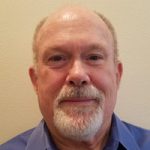
Bruce Wright
Chair, Patient
Bruce Wright lives in Ladera Ranch, California and is a retired commander in the U.S. Navy. He is a Vietnam War Veteran who served three tours of duty, work that exposed him to Agent Orange, which caused his cancers. Bruce also worked in military aerospace for 30 years and has been an active 10-year member of CLL Society, a non-profit, peer-to-peer support, education, and advocacy organization. He continues to serve in several CLL Society roles, including: Chair of the CLL Society Patient Advisory Board, Senior Support Group Advisor overseeing 10 groups across the country, Patient Educator, and Veteran Advisor. In this last capacity he has mentored more than 87 veterans and helped them receive the benefits they earned in service to our nation. Bruce has a deep knowledge of the Department of Veterans Affairs that includes the Veterans Benefits Administration, which oversees disability, insurance, and other benefits as well as the Veterans Health Administration, the largest integrated health care system in the country. Additionally, Bruce participates in SWOG as the Community Advocate representing Military Veterans. SWOG is a National Cancer Institute (NCI) supported organization that conducts clinical trials in adult cancers. Comprising more than 4,000 cancer researchers at more than 650 institutions across the United States and Canada, it is one of the largest of the NCI’s clinical trial cooperative groups supported by NCI and its National Clinical Trials Network (NCTN).
Bruce is a survivor of chronic lymphocytic leukemia and prostate cancer.
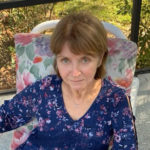
Elizabeth Dechen
Patient
I am a wife, a mother, and a grandmother who was a few months away from retirement when I found out during routine blood work that I had chronic lymphocytic leukemia (CLL) in 2011. I have been diagnosed with two different types of cancer in my life. After having ovarian cancer, I thought I was done with cancer. I was determined to find out as much as I could about CLL.
I did a lot of research online, trying to understand this new stranger in my life, hoping to make it a little less scary. I read article after article about CLL, treatment options, and found some support groups that I joined immediately. I met with a CLL specialist who told me that I had 17p deletion, meaning I would need treatment sooner rather than later. But initially, I was on Watch and Wait.
Finally, it was time for treatment; my lymphocyte counts were spiking. I went to a doctor in NYC for a second opinion who mentioned a new oral treatment called ibrutinib (Imbruvica). I was able to get into the clinical trial in Bethesda, MD at National Institutes of Health (NIH). Today, I have been on Imbruvica for eight years, and I am enjoying retirement with my husband.
My biggest piece of advice to others with CLL is to learn—you can’t fight anything without knowledge. Do as much research as you can, seek out support groups, go to a doctor that specializes in CLL, and keep learning—it is never too late to learn.
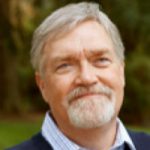
Terry Evans
Patient
In June, 2000, through a routine blood test I was diagnosed with chronic lymphocytic leukemia. I was Watch and Wait for over seven years. During this time I had blood tests every six months, and check-ups by a very qualified local hematologist to make sure I didn’t have any other ‘B’ symptoms like swollen lymph nodes, night sweats, fatigue, or weight loss. During those seven years I had minimal symptoms and the major issue was my increasing white blood count (WBC), which by September 2007 had increased to over 500,000. People with poor prognostic markers, like 11q deleted 17p, ZAP 70 positive, and unmutated have a much poorer prognosis. I have ALL of these markers and here I still am. Based on OLD statistics I had about 5-7 years of life left when I was diagnosed in 2000. Now, 17 years later I am still going strong, and expect to be here another 17.

Stephen Feldman
Patient
The date of CLL infamy arrived on May 16, 2014, at the office of my first hematologist-oncologist as he read the results of my flow cytometry and FISH studies. This visit followed the discovery that my white cell count was moderately elevated at the time of my annual physical the month prior. Physically I felt absolutely fine and was taken by complete surprise that I had cancer. I deflected my shock by joking to my doctor that “Cancer doesn’t run in my family. It doesn’t even walk.” Um, well, now it does. This hematologist referred me to the venerable CLL specialist Richard Furman, MD, in New York City (where I was then living) who redid the flow and FISH studies plus a slew of other related cytogenetic tests. I was 13q deleted with a splash of Trisomy 12 and negative for everything else. I was asymptomatic and thus escorted into Watch and Wait purgatory where I remained for 3 years. In the course of my online research I luckily stumbled into Brian Koffman’s CLL blog and made contact with him, apprising him not only of my new diagnosis but also my imminent relocation to Los Angeles. We met in person at the first CLL Society Patient Education Forum at City of Hope Hospital where I enlisted myself as the group facilitator for the just-forming CLL Society Los Angeles support group. At the forum I was also introduced to Dr. Steven Rosen, MD, who was to become my CLL specialist. A drop in my platelet count below 100 led to a bone marrow biopsy which led to the decision that the time for treatment – Imbruivca plus Gazyva — had arrived. My results were rapid – my white counts returned (and have remained) normal after my first infusion. I had a total course of 11 cycles (yes, 11!) of Gazyva and am presently remaining on a maintenance course of Imbruvica, though I was given the option to terminate treatment. Hoping for a very long and durable remission.
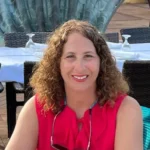
Jo-el Fernandez
Caregiver
My partner Sandy’s journey with CLL began in 2014, when lab work at a routine physical showed an elevated white blood count. My partner happens to also be a physician, so at first, he was not overly concerned, as he knew there could be many reasons for this lab finding. He and his own primary care physician agreed to repeat the lab work in a month. However, prior to that occurring, he developed an acute spinal disc issue that required immediate surgery. During the pre-operative lab work just before the surgery, he was found to again have an elevated white count, and a flow cytometry resulted in a diagnosis of CLL on May 15, 2014. At that time, he and I had been in a relationship for all of 5 months! Heading to the oncologist’s office together is not how most couples choose to start their dating journey, but sometimes life happens in ways that we cannot anticipate.
I am a researcher by nature, and my Google crash course in oncology 101 quickly led me to the CLL Society website. There, I found detailed and accurate information about the disease, and I began learning about FISH tests, CLL specialists, cytogenetic markers, and what it means to be severely immunocompromised. Sandy has a deletion of chromosome 13q14 and mutated IgHv and remains on active surveillance after 8+ years. We learned the importance of having a CLL specialist as part of his care team, and in 2017, he began seeing a CLL specialist at Dana Farber Cancer Institute in addition to his local hematologist-oncologist.
Over the recent years, we have embraced the philosophy that smart patients (and smart caregivers) get smart care! We have attended numerous educational programs on CLL and Sandy is active in the Physicians with CLL support group. We feel prepared for whatever the future may hold, and our relationship has only grown stronger despite our challenging first few months!
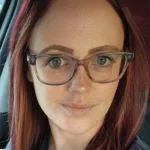
Lexii Freitas
Patient
I am a wife, mother of 3 young children, and currently a nursing student in the Central Valley of California. My CLL introduction began when I was found to have highly elevated lymphocytes after a routine blood draw in June of 2024. I received my official diagnosis from my hem/onc just 2 days after my 30th birthday, however, looking back previous bloodwork has shown that I have had elevated WBC since at least 2019 and it was never addressed because CLL is rare in general, but especially in those under 50 years of age. The only symptoms I had were a couple swollen lymph nodes in my neck and armpits and some fatigue, and all my other bloodwork looked good, so I was put on “Watch and Wait” status.
As someone who researches constantly, I immediately took the internet to learn everything I could about this new diagnosis, and this is where I discovered CLL Society, support groups, and the wealth of knowledge that the website has to offer. Through subsequent testing, I also learned that I have unmutated IGHV status and no deletions. Getting a “poor prognosis” marker added to the fear, but I am reassured by the information from CLL Society and the support group that the new medications are amazing and that it simply means that my W&W time might be a little shorter than I would like.
I am grateful for the resources that CLL Society offers, especially their Expert Access™ Program. This was the only chance that I had to speak with a CLL specialist, as my insurance will not approve me to see one in-person. It offered even more reassurance for me and educated me on possible clinical trials that I might qualify for in the future.
Of course, getting an “incurable cancer” diagnosis is never in anyone’s plans, but it is even harder to manage when you are young, and life is so busy. I am grateful to my husband and the CLL support groups that I was able to connect with. Finding others that are in the same phase of life with CLL has been a challenge for me, so I am sure that other younger people may be feeling the same. I feel fortunate to have the opportunity to be a part of the Patient Advisory Board and be able to share my experiences as well as continue to learn more from other patients.
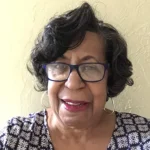
Sonja Hampton
Patient
I reside between Bowie, Maryland and Seattle, Washington. Retired after a 30-year career in public education as a teacher, principal, and deputy superintendent.
My proudest achievement is being the mother of four children and five grandchildren. They are my pride and joy.
I was diagnosed with SLL in 2019 and began treatment in 2023. It was discovered through a routine mammogram. The medical team made the decision to do a biopsy of a large lymph node and concluded I had SLL. I went for a second opinion at Fred Hutchinson Cancer Research Center in Seattle. I relocated to Bowie shortly after and have been receiving treatment in Maryland. My current treatment is Zanubrutinib. I am unmutated.
I attend the Washington DC based CLL Support Group and find it invaluable in terms of coping with my cancer journey. My faith sustains me as well.

Jolianne Jones
Patient
My journey with CLL / SLL began in 2016 during an ultrasound of a thyroid nodule. I was referred to a hematologist and placed on Watch and Wait with follow-up visits every six months. Over the next several years visits changed to every three months as I started experiencing severe fatigue and night sweats.
In December of 2019 I woke up with numbness on the left side of my face. After a virtual visit with my PCP, I was encouraged to go to the emergency room. There, I underwent a CT Scan, MRI, and blood tests. My symptoms persisted and several days later I was admitted to the hospital and immediately began treatment (MTX and Rituximab) for CNS involvement of CLL / SLL. I am currently being treated with ibrutinib and am tolerating it well.
I am fortunate to be a part of the Denver CLL Support Group where I receive support, gain knowledge, and share concerns and experiences with my fellow CLL’ers.

Larry Marion
Patient
A few days before Thanksgiving in 2005 I was diagnosed with CLL during my annual physical — I had no symptoms. My diagnosis included 11q, unmutated Ivgh and complex karyotype.
At the time I was living outside of Boston, 55 years old, married with a teenaged daughter and leading a custom publishing company with more than 60 contributors. Having terminal cancer was not part of my plan.
Thus began my CLL journey. My lymph nodes began to grow obvious in 2009. Later that year, I was having problems swallowing bulky foods, like bagels. An ear, nose, and throat specialist found a huge growth in my throat that was partially blocking my esophagus. So, I learned that there are lymph glands in the throat and one of them had swelled to the point that either throat surgery or anti-CLL chemo was required.
After extensive discussions with the heme/onc as well as consultations with several other CLL experts, in early 2010 I had seven cycles of a chemo cocktail called PCR followed by six months of orally taking a powerful anti-blood cancer agent called Revlimid.
By 2011, I was in in remission and had skirted most of the side effects of the chemo. However, the CLL returned in late 2013, not surprising given my bad markers. I started another chemo cocktail, bendamustine and rituximab, but it failed to shrink the lymph gland in my throat. I stopped the BR treatment after four cycles and waited for the FDA to approve ibrutinib for CLL, which happened in February 2014.
Ibrutinib knocked down the lymph glands and restored my blood counts to normal levels, though a host of side effects made life quite difficult, especially in the first six months. I stayed on ibrutinib for 5.5 years until my heme/onc decided it was time to switch to venetoclax, which got me to uMRD by October 2020.
While I’ve retired from my tech industry publishing career, I’ve been active in a number of CLL-related roles. I am the co-facilitator of the Boston CLL Society Support Group, a First Connection volunteer for the Leukemia and Lymphoma Society, and an occasional contributor to the CLL Society’s web site. My wife and I currently are bi coastal, in a sense—we live on an island off the west Coast of Florida during the winter and in a Boston suburb during the summer.
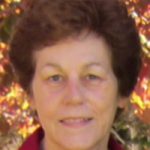
Barbara Massey
Patient
I was diagnosed with CLL in March of 2006 with a WBC of 47,000, and I am unmutated with Trisomy 12. After diagnosis my lymphocyte count doubled in five months, and my lymph nodes and spleen grew rapidly. I needed treatment sooner than later. I opted to be treated in a clinical trial of Rituxan (double the typical dosage) and HDMP. This treatment quickly put me into a very good remission. However in the spring of 2007, even though my CLL was well controlled, I developed ITP. ITP is an autoimmune problem that causes very low platelets. Since 2007 my CLL story has really been about treating my ITP. At times managing the ITP has been very challenging, but it is currently being controlled with cyclosporine. Meanwhile my CLL still remains in remission.
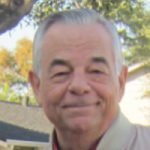
Howard Massey
Caregiver
I became a CLL caregiver in 2006 when my wife Barbara shocked me with the news that she most likely had CLL. It was hard to believe, since she seemed to be perfectly healthy. We quickly went online, seeking more information about CLL, and we learned as much as we could. We actually learned a lot, most importantly to find a CLL expert to oversee and treat Barbara’s CLL. We took this advice to heart, and finding a CLL expert was the first proactive thing that we did. Through CLL internet forums and message boards Barbara met other CLLers online. This eventually led to our finding and joining a local CLL support group in 2008. Several years later we continue to enjoy and benefit greatly from being part of this group.
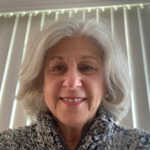
Raye Murphy
Patient
I was officially diagnosed in December 2003. Prior to my diagnosis, over a 5-month period, I had three consecutive blood tests with elevated WBC. When I saw the hematologist in November, he did a flow cytometry to confirm what he suspected. On my return visit in December, I was officially diagnosed with CLL. I was treated in 2005 with FCR. I had a 5-year remission. In 2010 I was treated with BR and did not tolerate the bendamustine well. As a result, I had a half dose each month. After 1½ years my counts started rising rapidly. Determined not to do chemo again, I enrolled in a clinical trial with what is now Zydelig and ofatumumab. Not tolerating the study drug, I finished the study with only ofatumumab. Following the clinical trial, in March of 2014, I began taking Imbruvica.
I am currently a Senior Support Group Advisor for CLL Society; I’m enjoying meeting new people, helping to mentor facilitators, and start new support groups around the country.
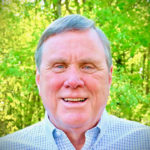
Dan Patterson
Patient
My CLL journey began in 2018 with a routine visit to my dermatologist, a physician I have known for years. When I complained about being tired, she sent me to the lab for some bloodwork. A few days later, while at work, I was checking my voicemail on my phone, and there was a message where she told me I had CLL — but not to worry as she had another patient doing well with CLL. More importantly, she had already made an appointment for me with a CLL specialist right there at Duke. Initially, I had no understanding of the disease, such as its short- and long-term effects. The years since that message and first visit with the specialist have been a continuous learning process. I am on “active observation” with no treatment to date. In addition to learning from the great team at Duke, I searched out reliable information online and found CLL Society. I read many of the links and info pages and signed up for the only patient group in North Carolina. In 2019, I began making the all-day trip to Charlotte once a month (3 hours driving each way) because I found the group there to be friendly and knowledgeable and open about their own life journeys with CLL. My wife joined me several times as care partners were welcomed. We were pleased when the society announced that a group would be formed in the Raleigh area, closer to our home. I volunteered and was honored to be selected as a co-facilitator for the new group, along with Lora Cox. We had our training in California in January 2020, and joined in a patient group session there with Dr. Koffman. Back in NC, we had just one meeting in person before COVID restrictions kicked in. I am pleased to say that the online support group format has worked well — we have a core group of regulars and welcome new members often. I continue to be impressed with the dual roles for CLL Society. By funding research and reviewing the latest science, the organization is working toward better diagnosis and treatment plans, thus serving the medical community and patients. At the same time, there is a keen focus on serving the patients and care partners, from the support groups to second opinion options, and attention to emerging issues, such as a global pandemic. I feel better prepared for my ongoing CLL journey because I am a member of CLL Society.

Christina Rodriguez Fuller
Patient
I was diagnosed in October 2018 after a couple of years of extreme fatigue. It had been about that long since I had a physical and I had some heart flutters concerning me, so I went in for a regular check-up which quickly led to the diagnosis of CLL. My heart is fine, so I am thankful for that. My journey led me to a local hematologist, then a CLL specialist in Houston before settling with a CLL specialist in Dallas where I am currently in the ECOG trial. I hope to finish the trial in September 2021 with positive results. My initial two doctors said it would be years before I would need treatment as I was a healthy woman, younger than most CLL patients and even though my markers were not great, they felt they were fine. Well, it did not turn out like that for me. But so far, the trial I am on is working positively. After spending some time online and finding a few CLL forums and groups I became more comfortable to attend a local CLL Society Support Group. We met a few times before the pandemic hit. I still find going online with “CLL people like me” has been extremely helpful to learn more, understand the doctors more, and feel supported. I know that being part of this group will be so beneficial.
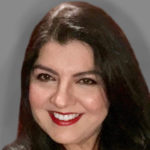
Haleh Simi
Patient
In 2007, I noticed bruises all over my body and a big lymph node in my neck with slightly elevated WBC. However, these symptoms were dismissed by my physicians until 2009 when I was diagnosed with CLL by a new doctor. I have been on Watch and Wait status ever since. There were many challenges after my diagnosis and finally after changing doctors three times, I settled on a hematologist that I feel comfortable with and trust. At the time there were no patient support groups in Portland, Oregon so I attended the LLS Blood Cancer Conferences in California where they connected me with CLL Society. I was recruited by Mr. Bruce Wright to be a co-facilitator for a new patient support group and it was the best decision of my life. We’ve had great success with these monthly meetings and continue to help and support each other through many difficult situations during our healing journey. I educate myself by participating in many CLL seminars and by reading through countless research articles. I am grateful to CLL Society and their mission of educating and supporting patients with this troublesome disease. Rumi said it best: “What You Seek is Seeking You.” I am concentrating on my health and keeping a positive healing attitude in life by helping others, and myself in the process.
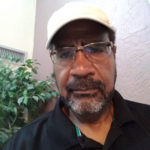
Michael Turner
Patient
I began my walk with CLL in 2015 while being observed for Waldenstrom’s macroglobulinemia (WM), (since 2005) a large slow growing B-cell malignancy. During an appointment with Dr. Castillo at Dana Farber in Boston, MA, a bone marrow biopsy presented a new separate condition, CLL. That became the overriding concern and I asked for a referral to a specialist in New York. He recommended Dr. Furman and/or Dr. Allen at Weil Cornell. I ended up with Dr. Allen and it has been a good match. A work up produced new issues, 11q del, unmutated and WM and CLL concurrently. Fast forward, CLL eventually occupied 94% of the bone marrow pushing WM down.
Since retiring many times I find myself in AZ. When I am there I am seen by Dr. Leis at Mayo Clinic Scottsdale, AZ. I am fortunate enough to have two physicians providing care. As you are aware Covid hit New York hard in 2020 and Dr. Leis and Dr. Allen said it was time to treat but not to return to NY. I was blessed by being in Arizona at that time and on my physicians advice stayed until August. We decided on acalabrutinib as it checked many boxes that we all had concerns with. Now a year later blood counts are mostly within normal range with very minor exceptions with Iga, Igg and Igm.
My introduction to CLL Society came as I was attending a WM (IWMF) meeting. It was a common space used on different dates for both organizations. It was not a hard or very thoughtful process to see the benefit of this organization in my life. It also has provided me with insight into many of the challenges patients face when navigating those treatment options many of us face. It was during one of the CLL Society meetings when I first met Dr. Koffman. I met him once again during a panel discussion at Sloan Kettering. I was impressed hearing his story. So now an opportunity presents itself as a chance to possibly give back. After much thought, I agreed.

Doreen Zetterlund
Patient
Doreen is a non-profit project manager living in Southern California since 1991. She is a native of Detroit, Michigan and graduated from Wayne State University with an MFA in Communication and a bachelor’s degree in Business Management. Her professional career began with film and television work behind the camera as a production coordinator and location manager, and as talent in radio voice-overs, commercials, runway modeling, and automotive industrial projects produced in Detroit. She felt the creative pull of Los Angeles and drove cross-country to continue her work in films, television, and live theatre. Doreen started her work in the non-profit arena in 2007 and began CLL patient advocacy in 2015 to share all she has learned from her own CLL diagnosis. She joined the CLL Society Patient Advisory Board in 2022. Doreen spends time volunteering at Leukemia & Lymphoma Society events, supporting group leaders at CLL Society meetings and events, and as a CLL patient advocate for the newly diagnosed. Doreen also enjoys films, theatre, meditation, reading, and supporting the local humane society.
International Patient Advocates
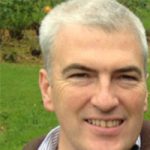
Michael Rynne
Caregiver
I live in Dublin with my wife, Jan, and four children. My journey with CLL began in 2011 when Jan was diagnosed at the age of 39. We realized at that time that we needed to inform ourselves in order to get the best treatment plan available. I strongly believe in patient advocacy and the sharing of information with a view to better treatments and prognosis for CLL patients.

Deborah Sims
Patient
Diagnosed in Melbourne over Christmas 2011 at the age of 38 after being told 6 months earlier that the pea sized lump in my neck was “nothing to worry about”. After a lymph node biopsy I was told I had an incurable cancer with poor prognostic markers (unmutated and del 6q) and that the average patient lived for 5 years, but that the average patient was a 75 year old man! I had my 2-year-old daughter on my lap at the time and was determined to do everything I could do see both her and her two older brothers reach adulthood. Twelve months after diagnosis, I had 3 cycles of FCR because of widespread lymphadenopathy with my remission ending in 2014. Now hoping a novel therapy will change the course of my disease and that I may be able to help Australians get greater access to these.
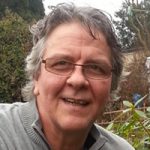
Nick York
Patient
It was the 25th November 2009 during investigation into health issues that I heard the name chronic lymphocytic leukaemia for the first time. Like many, shock combined with disbelief about the conflicting information I received left too many questions unanswered. I think it took me nearly 2 years to become comfortable in my own skin again and during that time became active in on-line CLL communities and UK support groups. It was meeting others, learning how they coped, and their knowledge of relevant and current information that helped me most. Today I remain on Watch and Wait and have become an active volunteer patient advocate and work with my CLL friends to continue to build on the work of our community to improve access to relevant information, treatment, and care to improve quality of life and outcomes for people affected by CLL.

